- Joined
- Oct 9, 2007
- Messages
- 47,850 (7.39/day)
- Location
- Dublin, Ireland
| System Name | RBMK-1000 |
|---|---|
| Processor | AMD Ryzen 7 5700G |
| Motherboard | Gigabyte B550 AORUS Elite V2 |
| Cooling | DeepCool Gammax L240 V2 |
| Memory | 2x 16GB DDR4-3200 |
| Video Card(s) | Galax RTX 4070 Ti EX |
| Storage | Samsung 990 1TB |
| Display(s) | BenQ 1440p 60 Hz 27-inch |
| Case | Corsair Carbide 100R |
| Audio Device(s) | ASUS SupremeFX S1220A |
| Power Supply | Cooler Master MWE Gold 650W |
| Mouse | ASUS ROG Strix Impact |
| Keyboard | Gamdias Hermes E2 |
| Software | Windows 11 Pro |
We are bang in the middle of an inflection point where the latest generation of CPUs, GPUs, motherboards, memory, displays, and software (Windows 10) just launched. To help our readers wanting to save big on their first gaming PC builds [and because the news is slow these days], TechPowerUp brings to you its Builder's Digest series of guides, on which components we would choose, to build a gaming or media PC from the ground up, at a given price-point.
In this episode, we're trying to build the best gaming PC possible, under $1,700. Our definition of "best" includes not just performance, but also energy-efficiency and noise. $1,700 is a great budget to get building your first serious gaming PC from scratch. Your only semblance of a PC right now is probably a notebook you take to school, and so you need to buy everything that makes up a desktop. Here's how TechPowerUp will spend that money.
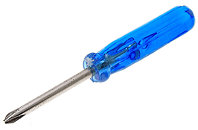
Processor - Intel Core i5-6600K
Always begin your budget with a good allocation for a processor. A well-chosen processor will last up to 4-5 years without bottlenecking any other parts you add down the line. Way back in 2010, we bought a $275 Core i7-950 (and a killer $140 X58-Outagamie motherboard to go with it). It's still a competent chip and still won't bottleneck today's hardware. We could have recommended a much cheaper Core i5 "Haswell" chip here, but then we're building for the future, and it helps to have the latest chip.
The Core i5-6600K is based on Intel's latest "Skylake" micro-architecture, has its highest IPC, support for DDR4 memory, and its accompanying 100-series chipset implements PCI-Express gen 3.0 bus entirely (even to the PCIe slots wired to the PCH). It's going to be the cheapest 6th generation Core processor with an unlocked base-clock multiplier, so you can overclock and keep its performance up, to cope with heavier software, as your machine gracefully ages.
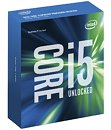
The Core i5-6600K is priced at $249. We're now down to $1,451.
Motherboard - GIGABYTE Z170XP-SLI
This is one of the cheapest motherboards based on the Z170 chipset to support 2-way SLI. Boards cheaper than this usually just have one PCI-Express 3.0 x16 slot you can use for graphics, while their second x16 slots are x4, and fit for PCIe SSDs at best. At just $139, This board covers all bases -
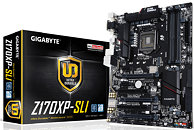
Memory - Crucial CT2K8G4DFD8213 (2 x 8 GB DDR4-2133 kit)
At just $88, you can't go wrong with this kit. 16 GB is the new mainstream memory amount, which shouldn't fall short for quite a while. DDR4-2133 MHz, the JEDEC-standard frequency for Core "Skylake" chips, is plenty of memory bandwidth on paper, and in practice. Its CAS latency of 15T is acceptable for this standard, as is its 1.2V DRAM voltage.
With $88 more spent, we're down to $1,224.
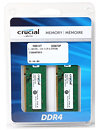
Graphics Card - ZOTAC GeForce GTX 980 Ti AMP!
This is arguably the most important component in your build. It's always best to keep most of your dough on a good graphics card. For us, it's the ZOTAC GeForce GTX 980 Ti AMP! As a GPU, the GeForce GTX 980 Ti can chomp through anything at 2560 x 1440 pixels resolution, and could even play games at 4K Ultra HD (3840 x 2160), with medium-thru-high settings. ZOTAC sweetens this deal by pricing its factory-overclocked and quieter-than-reference GTX 980 Ti AMP! at $650, not a penny more than reference. It offers performance and noise levels comparable to cards priced $20-30 higher.
With $650 spent, we're down to $574.
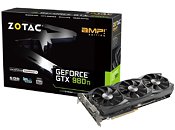
Power Supply - SeaSonic S12II 620 Bronze
This is another killer package, priced at just $69. We reckon that 620W is sufficient power for our build. SeaSonic is a highly reputable brand, makes some of the quietest PSUs, and on this unit it offers a 5-year warranty, which we're pretty sure you'll never need.
With $69 spent, we're down to $505.
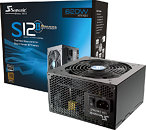
Solid State Drive - Crucial BX100 250 GB
The BX100 250 GB is the other well-rounded package from Crucial, which makes it to our build. At $84, it offers epic price-performance and price-capacity ratios. There are cheaper 250-ish GB drives, but none in the league of the BX100, in terms of performance and brand-trust. The SSD is still a critical component in your build, a broken drive takes down your stuff with it (pushing you into several hours of re-installs and backup-restores), which you can ill-afford if you're chasing a deadline. Brand-trust weighs in heavily here. The BX100 may not be as fast as the MX100 or MX200, but it comes very close.
With $84 spent, we're down to $421.
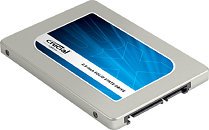
Case - Raijintek Arcadia
Choosing a case is a very subjective decision, weighing heavily on personal taste. If you like the looks of something better at the $36 we're spending on this case, go for it. We're choosing this case for what's under its panels - a no-nonsense layout with cutouts at just the right spots, a PSU bay where it should be, 2.5-inch drive bays, and enough clearance for our graphics card.
With $36 spent, we're down to $385. OMG, there's still a monitor and input devices to buy. Will we make it?
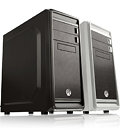
Monitor - QNIX QX2710 LED Evolution ll
It's just $299, for a 27-inch monitor that offers 2560 x 1440 pixels. You could substitute this with any of the $300-ish Korean-import 27-inchers running through western markets these days. Most markets have 1-2 year warranties mandated by the law, and the online stores selling these take returns/replacements for DOA. But will they last? Most Korean-import monitors are made from surplus display panels and logic boards made by display OEMs in South Korea and China, which didn't make it to the big brands (and not because they don't meet their QA standards). It's not as if a dimly-lit DMZ sweat-shop is making sophisticated TFT/IPS panels for you, so relax. Long-term reviews by people across the forumscape are fairly positive about these monitors. Your laws/regulations will protect your purchase, since this is NOT a gray-market deal. There's an off-grade version (with known defects) that's available as low as $209.
With $299 spent, we're down to $86.

CPU Cooler - Cooler Master Hyper TX3
At $250, the Core i5-6600K is costlier than its $243 predecessor - the i5-4670K, yet lacks a stock heatsink-fan, forcing us to buy one. At $20, the Cooler Master Hyper TX3 does the job. With a conservative fan-speed curve set in your BIOS, this cooler should be sufficient for this chip. It features a 4-pin (PWM) power input, so setting a good fan-speed curve should be a breeze.
Another $20 fly out, we're left with $66.
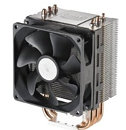
Input Devices - CM Storm Devastator
Well, it certainly beats non-gaming $15 keyboard-mouse combos from Microsoft or Logitech. The 2,000 dpi mouse is sufficient for most gaming types, allows both palm- and claw-grips; the keyboard is membrane-type, but offers decent tactile feedback, and is back-lit. You get this combo in three backlight colors - red, blue, and green.
The best part? It lacks the Razer Synapse herpes, which needs to ring home at each effing boot over the Internet, for your settings to take effect, until which time you're stuck with frustrating default settings. If your Internet connection isn't as reliable as the Pentagon's (tends to blackout sometimes), and you still want to fire up your rig to catch up with single-player games in Steam offline-mode, then Razer hardware will sing to you the song of its people.
We still have $37 left in our kitty.
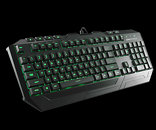
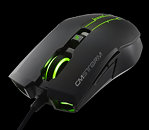
Headset - Sharkoon Rush ER1
At $18, the Rush ER1 is the cheapest circumaural headset from a notable gaming peripheral vendor. It features a monolitic fiber-type headband, wide-bore ear cups, decent 40 mm drivers with 102 dB sensitivity, and a 2.4 m long cord that sticks into just one end of the headset.
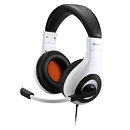
Alternatives / Substitutes
Not gonna lie, making this list was very tough, and we turned down some very compelling options. You could pick from them depending on your brand-preferences and how much you want to squeeze your budget.
Graphics Card - Sapphire Radeon R9 Fury Tri-X
This is arguably the single best AMD Radeon graphics card on the planet, right now. At $560, you get to shave $90 off our original build, and still end up with a card that's good enough for 2560 x 1440 pixels. Since it's based on the AMD reference PCB that's shared with the R9 Fury X, you get to play the stream processor unlock soft-mod lottery. The noise levels are in the same league as NVIDIA cards. HBM memory adds "coolness" to owning it. There are just two factors that came in its way - availability (very rare), lesser future-proofing. If you can find this card in your area, and you're not a prejudiced sheep against the AMD brand, pull out a poké ball.
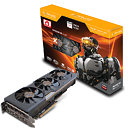
Graphics Card - EVGA GeForce GTX 980 Classified
It started out as an expensive $700-ish card, but can now be had for as low as $530. It's cheaper than even the Sapphire R9 Fury Tri-X, but at its given clocks, and a massive overclocking headroom thanks to its meaty VRM, it's a faster option. You get a ton of hardware and software overclocking features, and can dial down its load fan speeds considerably, while still keeping it game-worthy. This card came the closest to being our choice for the build. Trouble is, it's very rare to find the card at its new $530 price.
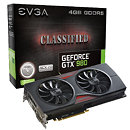
Monitor - Acer GN246HL
It's smaller - 24", has a lower resolution at 1080p, but a stunning 144 Hz refresh-rate. We've gamed on 144 Hz, and we can tell you that the jump from 60 Hz to 144 Hz is as much a revelation as the jump from 24-30 Hz (consoles) to 60 Hz. If you're cool with this resolution, go for it. It's also worth mentioning here that unlike our monitor choice, this $250 monitor comes from Acer, a very notable brand, with a nice warranty/replacement policy, if that makes you feel better.
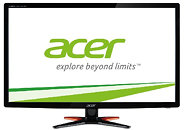
Could you have built something better at our price? Post away in our comments. Next week, we'll piece together something that can game, at $800.
Excludes taxes and shipping, prices sourced from Newegg.com, build covers hardware only. TechPowerUp encourages use of genuine software.
View at TechPowerUp Main Site
In this episode, we're trying to build the best gaming PC possible, under $1,700. Our definition of "best" includes not just performance, but also energy-efficiency and noise. $1,700 is a great budget to get building your first serious gaming PC from scratch. Your only semblance of a PC right now is probably a notebook you take to school, and so you need to buy everything that makes up a desktop. Here's how TechPowerUp will spend that money.

Processor - Intel Core i5-6600K
Always begin your budget with a good allocation for a processor. A well-chosen processor will last up to 4-5 years without bottlenecking any other parts you add down the line. Way back in 2010, we bought a $275 Core i7-950 (and a killer $140 X58-Outagamie motherboard to go with it). It's still a competent chip and still won't bottleneck today's hardware. We could have recommended a much cheaper Core i5 "Haswell" chip here, but then we're building for the future, and it helps to have the latest chip.
The Core i5-6600K is based on Intel's latest "Skylake" micro-architecture, has its highest IPC, support for DDR4 memory, and its accompanying 100-series chipset implements PCI-Express gen 3.0 bus entirely (even to the PCIe slots wired to the PCH). It's going to be the cheapest 6th generation Core processor with an unlocked base-clock multiplier, so you can overclock and keep its performance up, to cope with heavier software, as your machine gracefully ages.

The Core i5-6600K is priced at $249. We're now down to $1,451.
Motherboard - GIGABYTE Z170XP-SLI
This is one of the cheapest motherboards based on the Z170 chipset to support 2-way SLI. Boards cheaper than this usually just have one PCI-Express 3.0 x16 slot you can use for graphics, while their second x16 slots are x4, and fit for PCIe SSDs at best. At just $139, This board covers all bases -
- 2-way multi-GPU support,
- DDR4 memory support,
- Modern connectivity such as USB 3.1, M.2 32 Gb/s, SATA-Express 16 Gb/s, etc.;
- A decent 7-phase CPU VRM with heatsinks over all CPU VRM MOSFETs
- Intel GbE LAN
- 8-channel HD audio with ground-layer isolation, electrolytic capacitors, EMI-shielded CODEC
- Dual-UEFI BIOS, so beginners can afford to mess up BIOS updates

Memory - Crucial CT2K8G4DFD8213 (2 x 8 GB DDR4-2133 kit)
At just $88, you can't go wrong with this kit. 16 GB is the new mainstream memory amount, which shouldn't fall short for quite a while. DDR4-2133 MHz, the JEDEC-standard frequency for Core "Skylake" chips, is plenty of memory bandwidth on paper, and in practice. Its CAS latency of 15T is acceptable for this standard, as is its 1.2V DRAM voltage.
With $88 more spent, we're down to $1,224.

Graphics Card - ZOTAC GeForce GTX 980 Ti AMP!
This is arguably the most important component in your build. It's always best to keep most of your dough on a good graphics card. For us, it's the ZOTAC GeForce GTX 980 Ti AMP! As a GPU, the GeForce GTX 980 Ti can chomp through anything at 2560 x 1440 pixels resolution, and could even play games at 4K Ultra HD (3840 x 2160), with medium-thru-high settings. ZOTAC sweetens this deal by pricing its factory-overclocked and quieter-than-reference GTX 980 Ti AMP! at $650, not a penny more than reference. It offers performance and noise levels comparable to cards priced $20-30 higher.
With $650 spent, we're down to $574.

Power Supply - SeaSonic S12II 620 Bronze
This is another killer package, priced at just $69. We reckon that 620W is sufficient power for our build. SeaSonic is a highly reputable brand, makes some of the quietest PSUs, and on this unit it offers a 5-year warranty, which we're pretty sure you'll never need.
With $69 spent, we're down to $505.

Solid State Drive - Crucial BX100 250 GB
The BX100 250 GB is the other well-rounded package from Crucial, which makes it to our build. At $84, it offers epic price-performance and price-capacity ratios. There are cheaper 250-ish GB drives, but none in the league of the BX100, in terms of performance and brand-trust. The SSD is still a critical component in your build, a broken drive takes down your stuff with it (pushing you into several hours of re-installs and backup-restores), which you can ill-afford if you're chasing a deadline. Brand-trust weighs in heavily here. The BX100 may not be as fast as the MX100 or MX200, but it comes very close.
With $84 spent, we're down to $421.

Case - Raijintek Arcadia
Choosing a case is a very subjective decision, weighing heavily on personal taste. If you like the looks of something better at the $36 we're spending on this case, go for it. We're choosing this case for what's under its panels - a no-nonsense layout with cutouts at just the right spots, a PSU bay where it should be, 2.5-inch drive bays, and enough clearance for our graphics card.
With $36 spent, we're down to $385. OMG, there's still a monitor and input devices to buy. Will we make it?

Monitor - QNIX QX2710 LED Evolution ll
It's just $299, for a 27-inch monitor that offers 2560 x 1440 pixels. You could substitute this with any of the $300-ish Korean-import 27-inchers running through western markets these days. Most markets have 1-2 year warranties mandated by the law, and the online stores selling these take returns/replacements for DOA. But will they last? Most Korean-import monitors are made from surplus display panels and logic boards made by display OEMs in South Korea and China, which didn't make it to the big brands (and not because they don't meet their QA standards). It's not as if a dimly-lit DMZ sweat-shop is making sophisticated TFT/IPS panels for you, so relax. Long-term reviews by people across the forumscape are fairly positive about these monitors. Your laws/regulations will protect your purchase, since this is NOT a gray-market deal. There's an off-grade version (with known defects) that's available as low as $209.
With $299 spent, we're down to $86.

CPU Cooler - Cooler Master Hyper TX3
At $250, the Core i5-6600K is costlier than its $243 predecessor - the i5-4670K, yet lacks a stock heatsink-fan, forcing us to buy one. At $20, the Cooler Master Hyper TX3 does the job. With a conservative fan-speed curve set in your BIOS, this cooler should be sufficient for this chip. It features a 4-pin (PWM) power input, so setting a good fan-speed curve should be a breeze.
Another $20 fly out, we're left with $66.

Input Devices - CM Storm Devastator
Well, it certainly beats non-gaming $15 keyboard-mouse combos from Microsoft or Logitech. The 2,000 dpi mouse is sufficient for most gaming types, allows both palm- and claw-grips; the keyboard is membrane-type, but offers decent tactile feedback, and is back-lit. You get this combo in three backlight colors - red, blue, and green.
The best part? It lacks the Razer Synapse herpes, which needs to ring home at each effing boot over the Internet, for your settings to take effect, until which time you're stuck with frustrating default settings. If your Internet connection isn't as reliable as the Pentagon's (tends to blackout sometimes), and you still want to fire up your rig to catch up with single-player games in Steam offline-mode, then Razer hardware will sing to you the song of its people.
We still have $37 left in our kitty.


Headset - Sharkoon Rush ER1
At $18, the Rush ER1 is the cheapest circumaural headset from a notable gaming peripheral vendor. It features a monolitic fiber-type headband, wide-bore ear cups, decent 40 mm drivers with 102 dB sensitivity, and a 2.4 m long cord that sticks into just one end of the headset.

Alternatives / Substitutes
Not gonna lie, making this list was very tough, and we turned down some very compelling options. You could pick from them depending on your brand-preferences and how much you want to squeeze your budget.
Graphics Card - Sapphire Radeon R9 Fury Tri-X
This is arguably the single best AMD Radeon graphics card on the planet, right now. At $560, you get to shave $90 off our original build, and still end up with a card that's good enough for 2560 x 1440 pixels. Since it's based on the AMD reference PCB that's shared with the R9 Fury X, you get to play the stream processor unlock soft-mod lottery. The noise levels are in the same league as NVIDIA cards. HBM memory adds "coolness" to owning it. There are just two factors that came in its way - availability (very rare), lesser future-proofing. If you can find this card in your area, and you're not a prejudiced sheep against the AMD brand, pull out a poké ball.

Graphics Card - EVGA GeForce GTX 980 Classified
It started out as an expensive $700-ish card, but can now be had for as low as $530. It's cheaper than even the Sapphire R9 Fury Tri-X, but at its given clocks, and a massive overclocking headroom thanks to its meaty VRM, it's a faster option. You get a ton of hardware and software overclocking features, and can dial down its load fan speeds considerably, while still keeping it game-worthy. This card came the closest to being our choice for the build. Trouble is, it's very rare to find the card at its new $530 price.

Monitor - Acer GN246HL
It's smaller - 24", has a lower resolution at 1080p, but a stunning 144 Hz refresh-rate. We've gamed on 144 Hz, and we can tell you that the jump from 60 Hz to 144 Hz is as much a revelation as the jump from 24-30 Hz (consoles) to 60 Hz. If you're cool with this resolution, go for it. It's also worth mentioning here that unlike our monitor choice, this $250 monitor comes from Acer, a very notable brand, with a nice warranty/replacement policy, if that makes you feel better.

Could you have built something better at our price? Post away in our comments. Next week, we'll piece together something that can game, at $800.
Excludes taxes and shipping, prices sourced from Newegg.com, build covers hardware only. TechPowerUp encourages use of genuine software.
View at TechPowerUp Main Site
Last edited:








